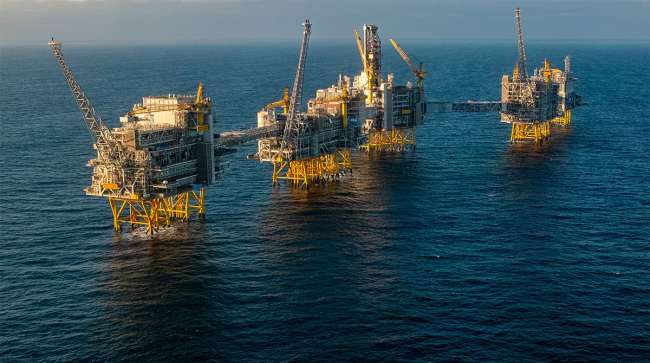Bloomberg News
Oil Producers Flush With Cash Cut Reliance on Funding Markets

[Stay on top of transportation news: Get TTNews in your inbox.]
Last year, the demand for loans from fossil fuel companies fell 6% year-on-year and that followed a decline of 1% in 2022.
From a climate perspective, this may sound like good news because the drop in bank lending to oil, gas and coal companies should mean less investment and less production over time.
The reality, however, is that oil and gas companies don’t need a lot of loans because they’re generating so much money these days from their underlying businesses, said Andrew John Stevenson, senior analyst at Bloomberg Intelligence. And that trend is likely to continue through the end of the decade, he said.
“The oil and gas industry has experienced a number of booms and busts over the past few decades, but for now, it appears to be flush with cash,” he said. The healthy balance sheets reflect the boost that companies have received from rising oil prices, buoyed by robust demand and OPEC+ production cuts.
Check out Transport Topics' updated Top 100 list of the largest logistics companies in North America, and explore how the industry's top players have adapted to a tough freight market and are preparing for the future. Tune in above or by going to RoadSigns.ttnews.com.
The sector’s free cash flow is so strong that the group’s leverage ratio, which measures a company’s net debt relative to earnings before interest, taxes, depreciation and amortization, fell to 0.8 in 2023 from 2.4 in 2020, Stevenson said. The ratio will likely slide below zero by the end of the decade, he said.
Banks typically play a critical role in enabling oil and gas companies to fund their capital-spending plans, but that’s changing, Stevenson said. As a group, the oil and gas industry’s free cash flow-to-capital expenditures ratio rose to 1 last year from 0.4 in 2020, and it’s forecast to approach 1.4 by 2030.
BI’s analysis shows the oil and gas industry’s free cash flow-to-capex ratio is poised to increase.
In other words, the average oil and gas company is now producing more cash than it needs to fund its capital expenditures through the end of the decade, Stevenson said. But for the environment, these trends aren’t helpful, he said.
Chevron Corp. and Saudi Aramco are among the companies that may “significantly increase” their oil and gas production through 2030 with “enough free cash on hand to support these investments,” Stevenson said. This will allow fossil fuel companies to undermine “the banking sector’s efforts to keep the fuel in the ground as part of its push on climate,” he said.
Want more news? Listen to today's daily briefing above or go here for more info
Exxon Mobil Corp. and Chevron, which reported earnings April 26, are both predicting their production in the Permian Basin — the U.S. region that already supplies more oil than Iraq — will climb by 10% this year.
The expected increase comes amid reports from the International Energy Agency that demand for oil is forecast to grow by about 1.3 million barrels a day this year to a record high.
BI provides estimates for the combined oil and gas production of 75 publicly traded companies.





